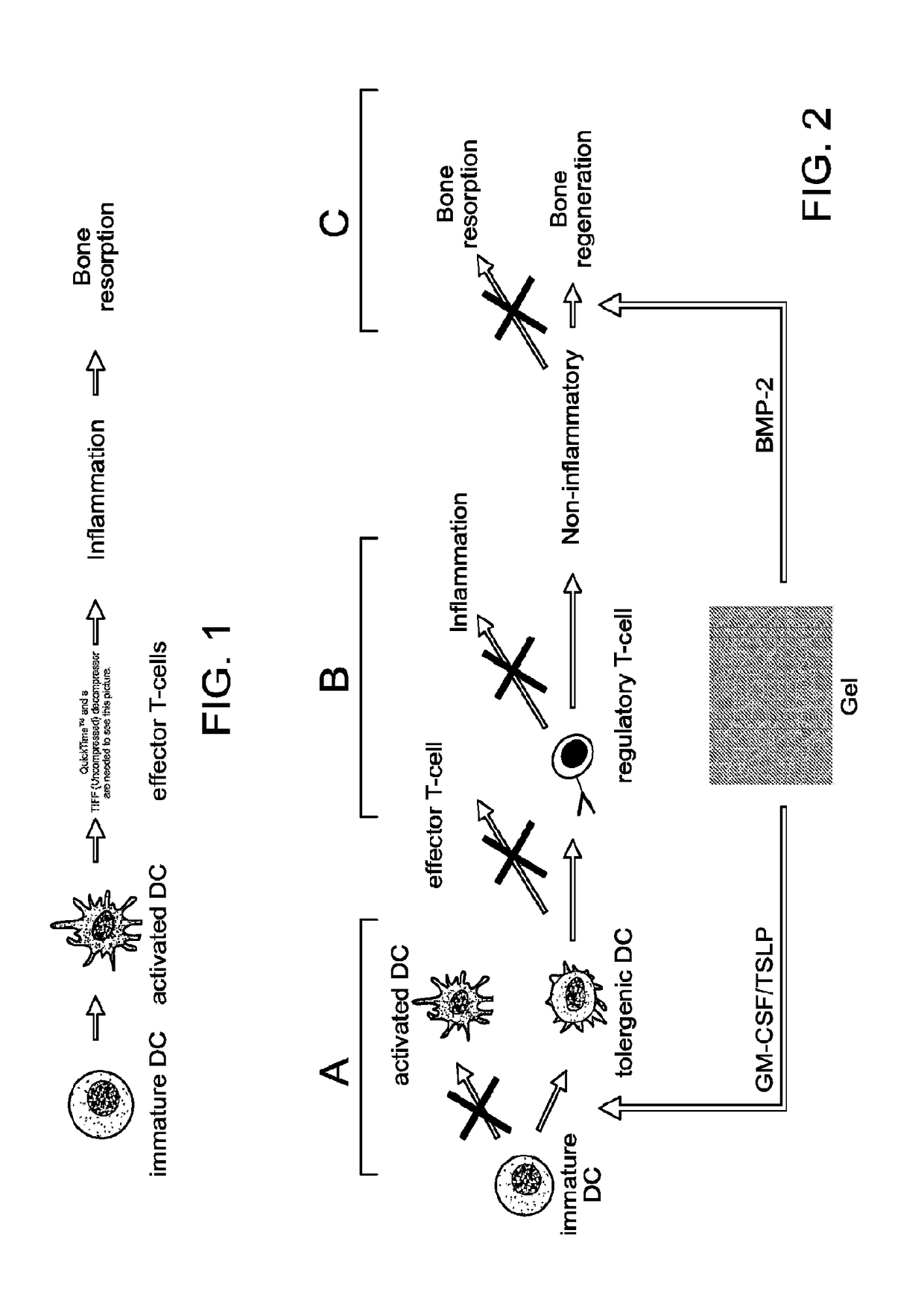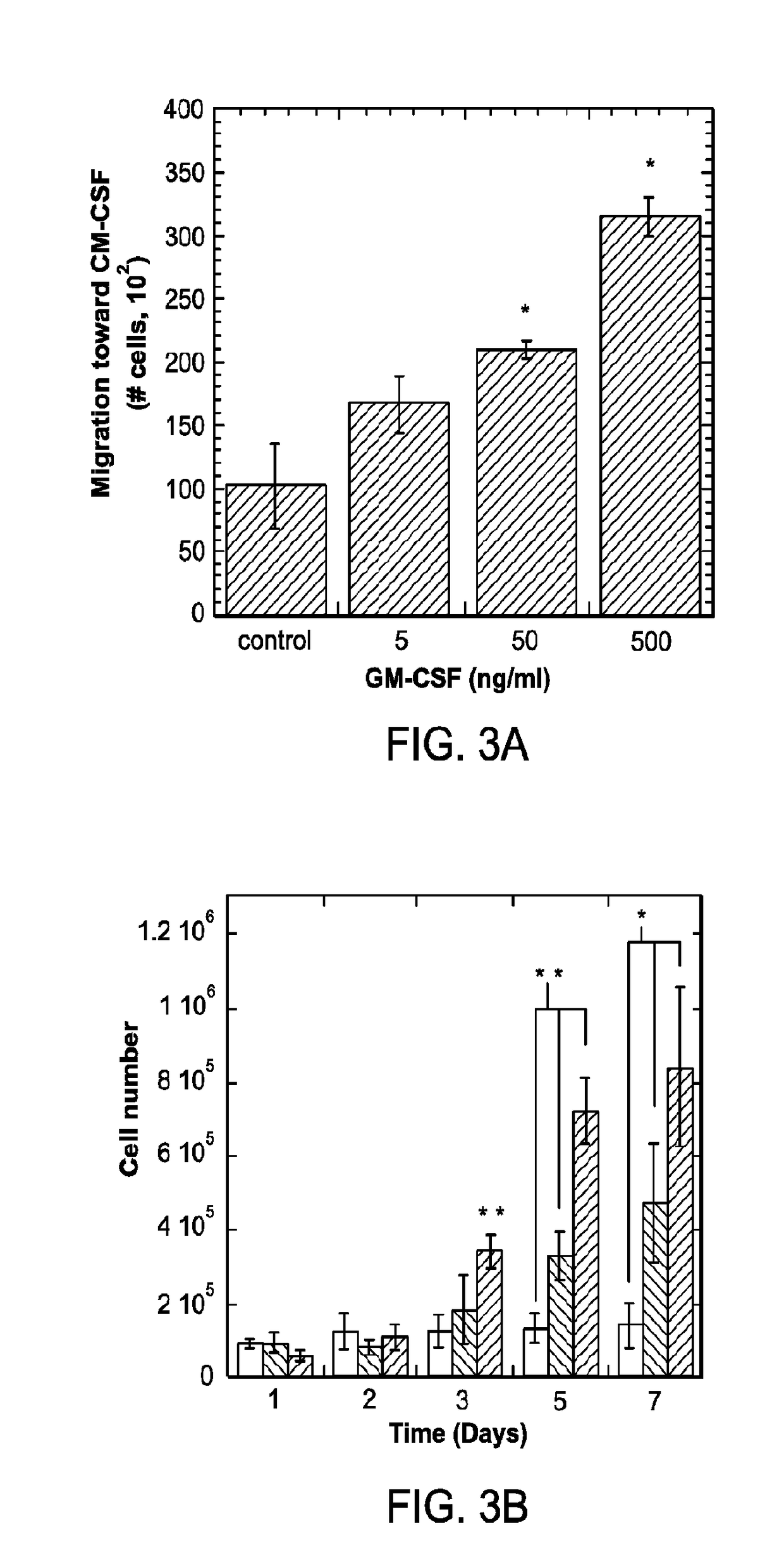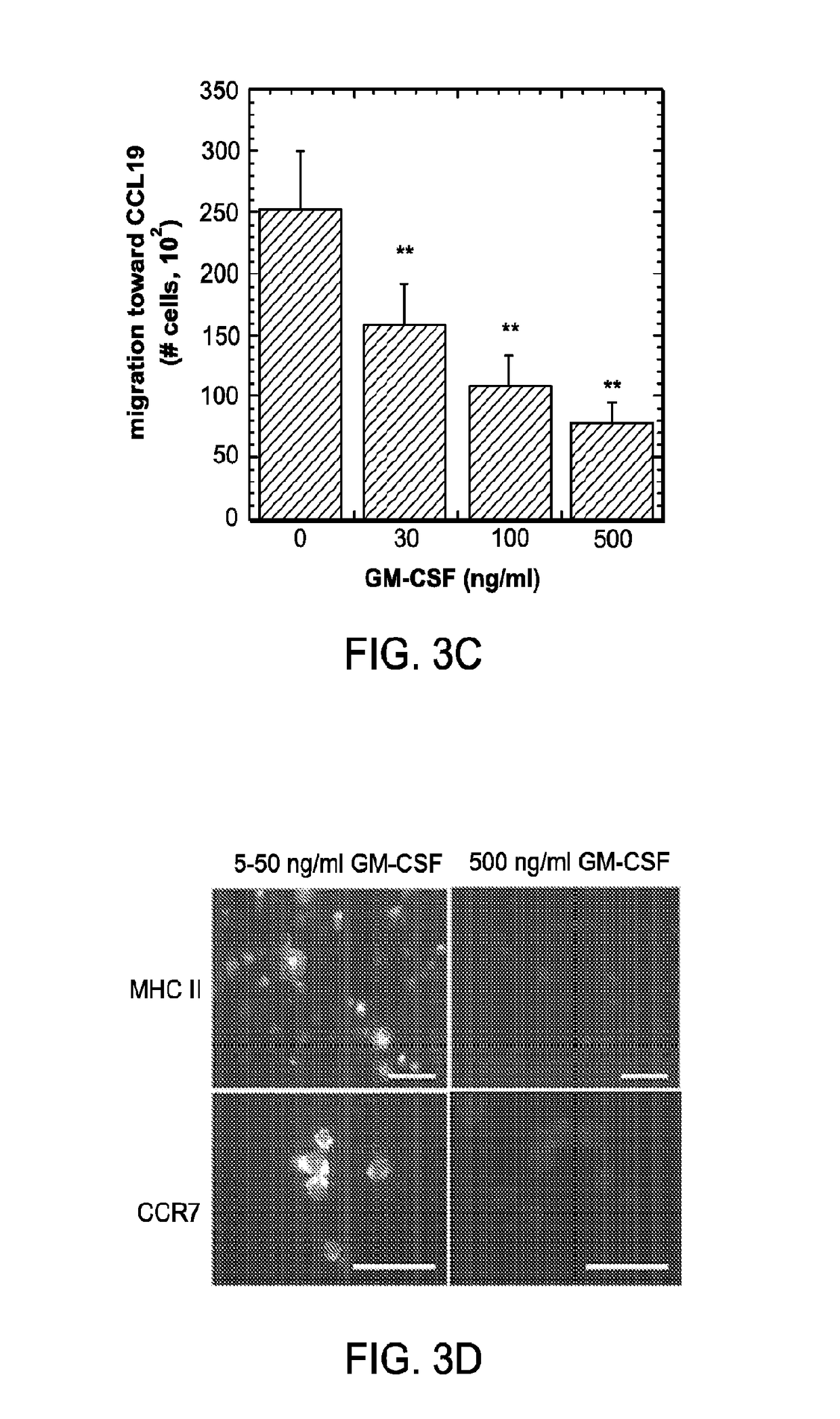Immunoconjugates for programming or reprogramming of cells
a technology of immunoconjugation and cell, applied in the field of immunomodulation, to achieve the effect of enhancing th2 immunity, enhancing th2 immunity, and increasing t reg numbers
- Summary
- Abstract
- Description
- Claims
- Application Information
AI Technical Summary
Benefits of technology
Problems solved by technology
Method used
Image
Examples
example 1
n of Dendritic Cell Activation and Proliferation with Dexamethasone
[0375]To determine the dose dependent effects of dexamethasone on DC and to establish a therapeutic window for treating DC, DC were treated with various concentrations of dexamethasone and the resulting phenotype was assayed. Dexamethasone treatment had a pronounced effect on DC phenotype and function (FIGS. 23A-D and 24A-E).
[0376]The histograms in FIGS. 23A-D demonstrate the effects of dexamethasone on the expression of CD11c (A), MHC II (B), CD80 (C), and CD86 (D) on primary bone marrow dendritic cells (BMDC) cultured for 10 days in vitro in the presence dexamethasone. The listed concentrations of dexamethasone were added on day 6 and day 8. For the lipopolysaccharide (LPS) condition, LPS was added to a concentration of 50 ng / ml on day 9. Control samples had no added dexamethasone. “LPS” samples had LPS, but no dexamethasone.
[0377]In immature bone marrow derived dendritic cell (BMDC) cultures (FIGS. 23A-D), treatme...
example 2
sone had Minimal Effect on Dendritic Cell Migration
[0383]DC migration both to a vaccine site and then toward the draining lymph node of a vaccine is important in vaccine efficacy. As such, the effect of dexamethasone on DC migration was examined (FIGS. 26A-C). In transwell migration assays, dendritic cells showed a trend toward increased migration toward high concentrations of dexamethasone (FIG. 26A); however, this result was not significant at the 0.05 level. Similarly, cells treated with dexamethasone showed a trend toward greater migration to CCL19 than untreated controls; however, this result was not significant (FIG. 26B). In dendritic cells treated with 10−6 or 10−7 M dexamethasone, the number of cells that migrated to CCL20 was approximately 1.8 fold greater than in the control condition (FIG. 26C).
example 3
a Dexamethasone Derivative for Antigen Specific Tolerance
[0384]A synthetic strategy was designed for coupling dexamethasone to a generic peptide backbone (FIGS. 27A-D). In pharmaceutical preparations, dexamethasone can be derivatized with a phosphate at the primary alcohol on carbon 21, creating a more water soluble compound while still maintaining clinical potency. In this example, a derivitization strategy was selected such that the alcohol on carbon 21 of dexamethasone was covalently coupled to succinic anhydride. The resulting dexamethasone hemisuccinate (4-pregnadien-9α-fluoro-16α-methyl-11β, 17, 21-triol-3, 20-dione 21-hemisuccinate) was then chemically bonded to the N-terminus of a peptide (FIG. 27A) by standard solid-phase peptide synthesis (FIG. 27B).
[0385]Dexamethasone was coupled to the N-terminus of the SIINFEKL peptide chain, as evidenced by liquid chromatograph-mass spectrometry (LC-MS) (FIGS. 27C-D). The overall yield for the synthesis of Dex-SIINFEKL was 64%, and the...
PUM
| Property | Measurement | Unit |
|---|---|---|
| Electrical conductance | aaaaa | aaaaa |
| Absorption cross section | aaaaa | aaaaa |
| Absorption cross section | aaaaa | aaaaa |
Abstract
Description
Claims
Application Information
 Login to View More
Login to View More - R&D
- Intellectual Property
- Life Sciences
- Materials
- Tech Scout
- Unparalleled Data Quality
- Higher Quality Content
- 60% Fewer Hallucinations
Browse by: Latest US Patents, China's latest patents, Technical Efficacy Thesaurus, Application Domain, Technology Topic, Popular Technical Reports.
© 2025 PatSnap. All rights reserved.Legal|Privacy policy|Modern Slavery Act Transparency Statement|Sitemap|About US| Contact US: help@patsnap.com



